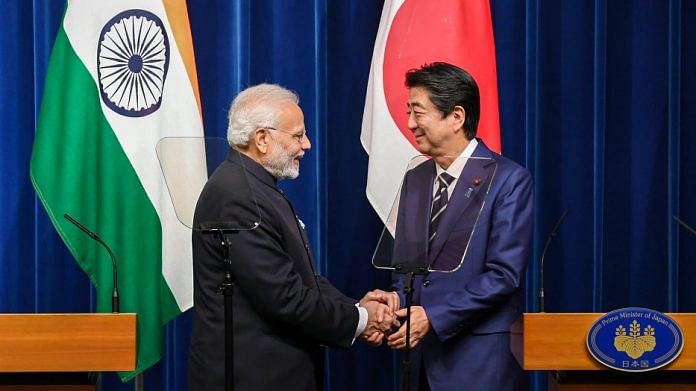The agreement was signed during PM Modi’s visit to Japan. Finance minister Arun Jaitley said it reflected the “depth of our deeper economic relationship”.
New Delhi: India and Japan signed a $75 billion currency swap agreement — the largest in the world — Monday, a move that will boost financial and foreign exchange stability and even help the capital markets.
The agreement was signed during Prime Minister Narendra Modi’s two-day visit to Japan. Finance Minister Arun Jaitley in a tweet said the bilateral swap reflected the “depth of our deeper economic relationship”.
The finance ministry added in a statement: “This facility will not only enable the agreed amount of capital being available to India on tap for use, it would also help in bringing down the cost of capital for Indian entities while accessing foreign capital market.”
Also read: India set to overtake Japan and become 3rd largest economy by 2030
How does currency swap work?
Simply put, it’s like a line of credit, which also acts as a measure aimed at risk mitigation.
Under the agreement, India and Japan can swap currencies without involving any third party. Such agreements allow countries to access loans in foreign currency at more favourable interest rates from each other.
Interest on the swapped principal amount is required to be paid, and once the tenure is over, the principal amounts are swapped again at a pre-agreed rate. In other words, the exchange rate is pre-fixed. So under this agreement, both India and Japan will also be able to procure dollars from each other at a pre-fixed rate.
Does this mean India gets $75 billion immediately?
No. It only means that this line of credit is open to India and it can access loans at any given point to avert any risk. India will be able to get a loan immediately in dollar or yen, in exchange for the rupee. The agreement has been signed, and therefore, can be used as and when required, to mitigate any adverse situation in the economy.
The agreement has provided a fillip to market sentiments while cushioning the rupee. Besides, this will also help in meeting short-term liquidity needs.
Also read: Unable to deliver on economy, Modi, Xi & Abe have resorted to empty sledging
Why was this signed?
The rupee has been steadily depreciating, breaching the level of 74 per dollar earlier this month. Although it has recovered from that level, it has depreciated by about 13 per cent this year.
To arrest this trend and reduce volatility in the currency market, the Reserve Bank of India (RBI) has been aggressively intervening by dipping into its foreign exchange reserves. India’s forex reserves touched a high of $426 billion in April, but since then, the figure has been falling.
At present, India’s forex reserve are at $393.52 billion, below the psychological $400 billion mark.
The government was also looking to raise funds through NRI bonds to cushion the rupee.
Is this the first time India has signed such an agreement?
No, India has signed such agreements in the past as well. In fact, currency swap agreements have been signed between India and Japan too.
In 2013, the two countries signed a similar agreement, enhancing the loan amount from $15 billion to $50 billion. Japan signed a currency swap agreement for $30 billion with China a week ago.



